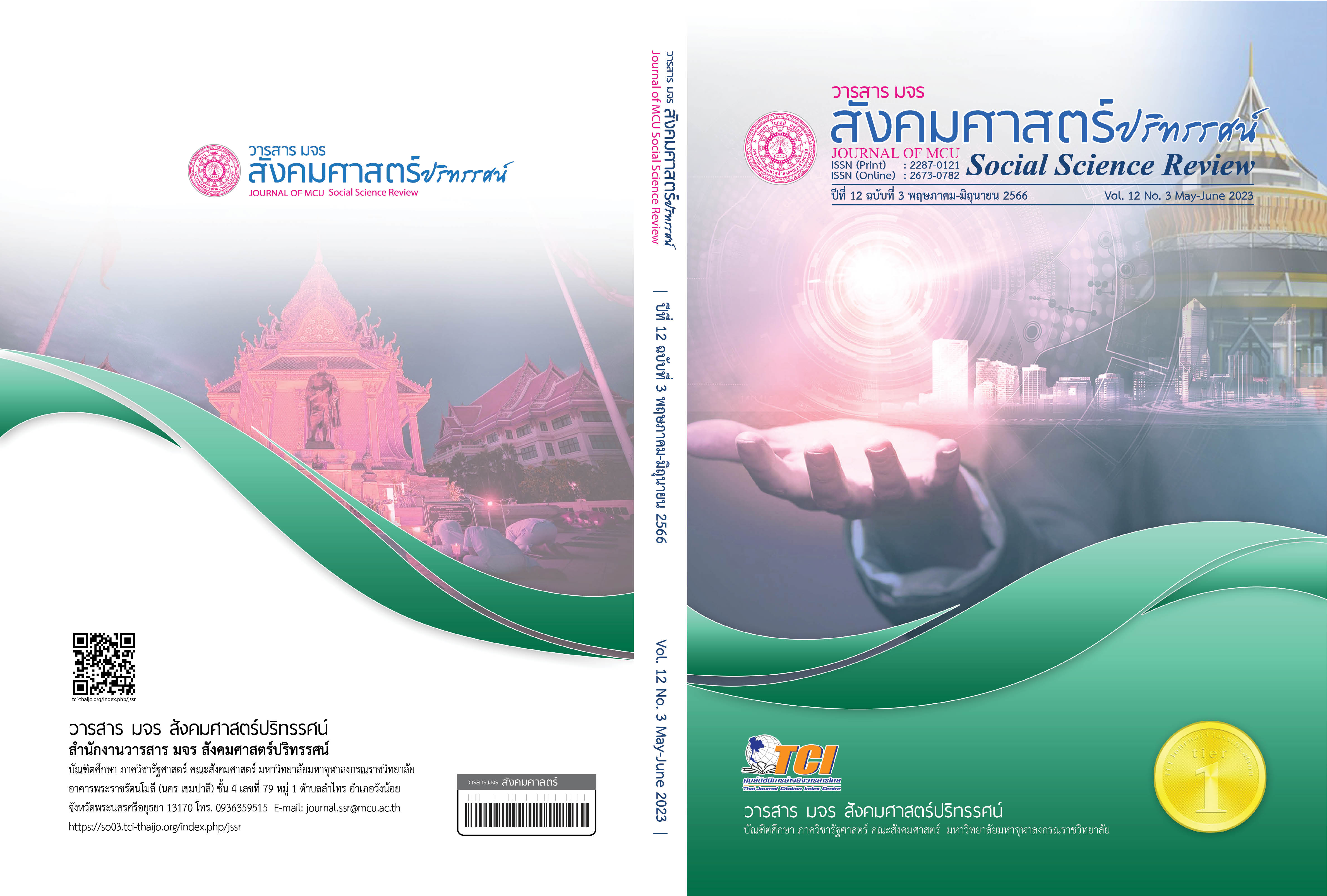ปัจจัยที่มีอิทธิพลต่อความรอบรู้ด้านสุขภาพเพื่อป้องกันไวรัสโคโรน่า 2019 ของประชาชนในชุมชนแออัด เขตจตุจักร กรุงเทพมหานคร
คำสำคัญ:
ความรอบรู้ด้านสุขภาพ, ไวรัสโคโรน่า2019, ชุมชนแออัดบทคัดย่อ
งานวิจัยเชิงสำรวจแบบภาคตัดขวางนี้มีวัตถุประสงค์เพื่อตรวจสอบความรอบรู้ด้านสุขภาพเพื่อป้องกันการติดเชื้อไวรัสโคโรน่า 2019 และวิเคราะห์ปัจจัยที่มีอิทธิพลต่อความรอบรู้ด้านสุขภาพฯ ของประชาชนในชุมชนแออัด เขตจตุจักร กรุงเทพฯ จากประชาชนที่อายุเกิน 20 ปีทั้งหมด 615 คน ประชาชนที่อายุเกิน 20 ปีทั้งหมด 245 คนที่ผ่านการคำนวณขนาดตัวอย่างและสุ่มตัวอย่างแบบมีระบบเข้าร่วมในการวิจัยนี้ แบบสอบถามที่ผ่านการตรวจคุณภาพด้วยค่าความตรงเชิงพินิจจากผู้เชี่ยวชาญ 3 คน อยู่ระหว่าง 0.67 ถึง 1.00 และสอบความเที่ยงโดยประชาชนในชุมชนบางเขน 30 คน ได้ และค่า KR-21 เท่ากับ 0.84 การวิเคราะห์ข้อมูลใช้สถิติเชิงพรรณนา และเชิงอนุมานโดยการทดสอบค่า t และสมการถดถอยเชิงเส้นแบบพหุปัจจัย โดยใช้โปรแกรมสำเร็จรูปทางสถิติ
ผลการวิจัยพบว่า ความรอบรู้ด้านสุขภาพของประชาชนอยู่ในระดับปานกลาง ปัจจัยที่มีอิทธิพลต่อความรอบรู้ด้านสุขภาพของประชาชน ได้แก่ การรับรู้และการสนับสนุนทางสังคม ข้อเสนอแนะจากการวิจัยนี้ คือ ชุมชน หน่วยบริการสุขภาพควรมีการประชาสัมพันธ์ หรือจัดกิจกรรมเพื่อสร้างการรับรู้ และครอบครัว ชุมชน หน่วยบริการสุขภาพควรสนับสนุนประชาชนในการเพิ่มความรอบรู้ด้านสุขภาพเพื่อป้องกันการติดเชื้อไวรัสโคโรน่า 2019
เอกสารอ้างอิง
กรกนก ลัธธนันท์ และจันทร์เพ็ญ นิลวัชรมณี. (2562). ความรอบรู้ด้านสุขภาพของนักศึกษาพยาบาลวิทยาลัยพยาบาลบรมราชชนนี กรุงเทพมหานคร. วารสารวิทยาลัยพยาบาลบรมราชชนนี กรุงเทพฯ, 35(1), 277-289.
กรรณิการ์ การีสรรพ์ และคณะ. (2562). ความสัมพันธ์ระหว่างความรอบรู้ด้านสุขภาพ ความรู้เกี่ยวกับการควบคุมโรคความดันโลหิตสูง และพฤติกรรมการดูแลสุขภาพของผู้สูงอายุที่เป็นโรคความดันโลหิตสูง. รามาธิบดีพยาบาลสาร, 25(3), 280-295.
ฉันทพิชญา โพธิสาจันทร์ และคณะ. (2551). พฤติกรรมการป้องกันโรค ไข้หวัดนกของเครือข่ายแกนนำสุขภาพ. นนทบุรี: กองสุขศึกษา กรมสนับสนุนบริการสุขภาพ.
ภาวิณี มนตรี และคณะ. (2564). ความรอบรู้ด้านสุขภาพและพฤติกรรมป้องกันโรคที่มียุงลายเป็นพาหะของประชาชน ในพื้นที่จังหวัดปทุมธานี. วารสารควบคุมโรค, 47(2), 343-352.
เยาวลักษณ์ มีบุญมาก และคณะ. (2562). ความรอบรู้ด้านสุขภาพของผู้สูงอายุในชุมชนกึ่งเมือง แห่งหนึ่งในจังหวัดราชบุรี. วารสารเครือข่ายวิทยาลัยพยาบาลและการสาธารณสุขภาคใต้, 6 (ฉบับพิเศษ), 129-141.
วรรษมน จันทรเบ็ญจกุล.(2563). การป้องกันการติดเชื้อไวรัสโคโรน่า 2019 (COVID-19). กรุงเทพฯ: จุฬาลงกรณ์มหาวิทยาลัย.
ศูนย์ปฏิบัติการภาวะฉุกเฉิน กรมควบคุมโรค. (2563). ข้อมูลสำหรับการป้องกันตนเองจากโรค COVID-19. นนทบุรี: กระทรวงสาธารณสุข. สืบค้นเมื่อ 9 ตุลาคม 2563, จาก ddc.moph.go.th/viralpneumonia/file/int-pretection 03.pdf.
ศูนย์ปฏิบัติการด้านข่าวโรคติดเชื้อไวรัสโคโรน่า 2019 กรมควบคุมโรค. (2564). รายงานข่าวกรณีติดเชื้อไวรัสโคโรน่า 2019 วันที่ 15 มิถุนายน 2564. นนทบุรี: กระทรวงสาธารณสุข. สืบค้นเมื่อ 15 มิถุนายน 2564. จาก https//www.moph.go.th.
สรวุฒิ เอี่ยมนุ้ย. (2564). ปัจจัยที่มีผลต่อการปฏิบัติงานตามบทบาทอาสาสมัครสาธารณสุขประจําหมู่บ้านในการเฝ้าระวังและป้องกันโรคไวรัสโคโรน่า 2019 อําเภอกงไกรลาศ จังหวัดสุโขทัย. วารสารสาธารณสุขและสุขภาพศึกษา, 1(2), 75-90.
อภิวดี อินทเจริญ และคณะ. (2564). ปัจจัยที่มีอิทธิพลต่อพฤติกรรมการป้องกันโรคติดเชื้อไวรัส โคโรนา 2019 ของประชาชนในเขตเทศบาลเมืองคอหงส์ จังหวัดสงขลา. วารสารสภา การสาธารณสุขชุมชน, 3(2), 19-30.
Centers for Disease Control and Prevention. (2019).Novel coronavirus, Wuhan, China. Retrieved August 1, 2020, from www.cdc.gov/ coronavirus/2019-nCoV/summary.html.
Chen, X., et al. 2020. Hand hygiene, mask-wearing behaviors and its associated factors during the COVID-19 epidemic: a cross-sectional study among primary school students in Wuhan, China. Int. J. Environ. Res. Public Health, 17(8), 2893-2899.
Chu, D.K., et al. (2020). Physical distancing, face masks, and eye protection to prevent person-to-person transmission of SARS-CoV-2 and COVID-19: a systematic review and meta-analysis. Lancet, 395(10242), 1973–1987.
Dong, L. Bouey, J., 2020. Public mental health crisis during COVID-19 pandemic, China. Emrging Infect. Dis, 26(7), 1616–1618.
Goh, Y., et al. (2020). The face mask: how a real protection becomes a psychological symbol during Covid-19. Brain Behav. Immun, 88(2), 1–5.
Ishikawa, H., et al., (2008). Developing a measure of communicative and critical health literacy: A pilot study of Japanese office workers. Health Promotion International, 23(3), 269- 274.
Li, Q., et al. (2020) Early transmission dynamics in Wuhan, China, of novel coronavirus-infected pneumonia. N Engl J Med, 20(3), 253-264.
Nutbeam, D. (2008). The evolving concept of health literacy. Social Science & Medicine, 67(12), 2072-2078.
Qui, Y., et al. (2020). Impacts of social and economic factors on the transmission of coronavirus disease 2019 (COVID-19) in China. Journal of Population Economics, 33, 1127–1172.
Walsh, B., et al. (2020). Differences in Risk of Severe Outcomes from COVID-19 across Occupations in Ireland. Dublin: The Economic and Social Research Institute.
Wang, C., et al. (2020). A novel coronavirus outbreak of global health concern. Lancet, 395, 470–473.
WHO. (2020). Novel Coronavirus–China. Retrieved June 21, 2020, from www.who.int/csr/don/12january2020novelcoronaviruschina/en/.
Yang, Y., et al. (2019). Mediating effect of social support on the associations between health literacy, productive aging, and self-rated health among elderly Chinese adults in a newly urbanized community. Medicine, 98(16), 1-8.
Zhu, N., et al. (2020). A novel coronavirus from patients with pneumonia in China, 2019. N Engl J Med, 20(1), 54-66.
ดาวน์โหลด
เผยแพร่แล้ว
รูปแบบการอ้างอิง
ฉบับ
ประเภทบทความ
สัญญาอนุญาต
ลิขสิทธิ์ (c) 2023 วารสาร มจร สังคมศาสตร์ปริทรรศน์

อนุญาตภายใต้เงื่อนไข Creative Commons Attribution-NonCommercial-NoDerivatives 4.0 International License.
เพื่อให้เป็นไปตามกฎหมายลิขสิทธิ์ ผู้นิพนธ์ทุกท่านต้องลงลายมือชื่อในแบบฟอร์มใบมอบลิขสิทธิ์บทความให้แก่วารสารฯ พร้อมกับบทความต้นฉบับที่ได้แก้ไขครั้งสุดท้าย นอกจากนี้ ผู้นิพนธ์ทุกท่านต้องยืนยันว่าบทความต้นฉบับที่ส่งมาตีพิมพ์นั้น ได้ส่งมาตีพิมพ์เฉพาะในวารสาร มจร สังคมศาสตร์ปริทรรศน์ เพียงแห่งเดียวเท่านั้น หากมีการใช้ภาพหรือตารางหรือเนื้อหาอื่นๆ ของผู้นิพนธ์อื่นที่ปรากฏในสิ่งตีพิมพ์อื่นมาแล้ว ผู้นิพนธ์ต้องขออนุญาตเจ้าของลิขสิทธิ์ก่อน พร้อมทั้งแสดงหนังสือที่ได้รับการยินยอมต่อบรรณาธิการ ก่อนที่บทความจะได้รับการตีพิมพ์ หากไม่เป็นไปตามข้อกำหนดเบื้องต้น ทางวารสารจะถอดบทความของท่านออกโดยไม่มีข้อยกเว้นใดๆ ทั้งสิ้น





